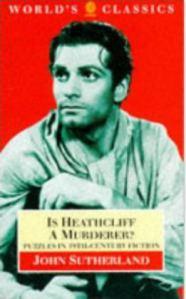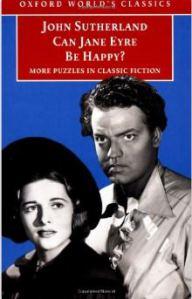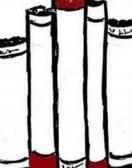This blog post returns to the subject of essays, literary essays in particular, in the shape of John Sutherland’s collection of pieces delving behind the scenes of some well-known nineteenth century novels. Not surprisingly, the book’s title Is Heathcliff a Murderer? (OUP, 1996) attracted me straightaway. I can’t remember how long Sutherland’s book has been on the TBR Pile, but I probably bought it in the year of publication. Sutherland later wrote follow-up collections of articles on literary puzzles called Can Jane Eyre be Happy? (1997) and Who Betrays Elizabeth Bennet? (1999) neither of which I have got around to buying, which given the parlous state of the unread pile is probably just as well.

Literary Puzzles…
I have dipped into Sutherland’s collection at various times over the years, but this time I set out to read all of the essays (thirty-four) in the book. The pieces vary in length from about three and a half pages up to eight pages, so I found them ideal for bus and Luas journeys. I began, as I did when I read the Somerset Maugham essays, with those discussing books that I have read. Obviously, the literary puzzle that Sutherland dissects has more resonance if you have read the original work. Even so, there were certainly things that I had never noticed before; such are the benefits of a very close textual reading. I have discovered that there is a definite plot spoil element to my mission. I won’t however reveal these to you, dear reader. Suffice to say that I will know what plot features and anomalies to look out for in for instance, Jude the Obscure, The Master of Ballantrae and Phineas Finn when I finally get around to tackling them.
In his introduction, John Sutherland acknowledges that his solutions may not be the most plausible. He explains the rationale behind his exploration of these literary brainteasers, which he defends from any accusation of mere frivolity:
But I would argue that however far my solutions are fetched the problems which inspire them are not frivolous. It is worthwhile for readers to be curious where Sir Thomas Bertram’s wealth comes from, or to wonder why The Picture of Dorian Gray is so ‘queerly’ disturbing, or to inquire why George Eliot and Henry James consciously flawed the printed endings to their greatest novels. It is less crucial, but no less thought-provoking, that Henry Esmond –the highly literate creation of a highly literate author-should quote from a work forty years before it will be written. The questions which have provoked this book are, I maintain, good questions.
If you are the kind of reader that says, ‘But hang on a minute, didn’t that…’ or ‘That timing doesn’t make  sense’ or who argues about what the author really meant in writing the closing paragraphs, then this is the book for you. Some of the puzzles can be shown to be errors as the result of hasty writing; perhaps due to mistakes in plotting; or inaccuracies arising from the pressure of producing a story in instalments. Others are more intriguing (and as Sutherland points out, not in any way frivolous), such as the question of whether Thomas Bertram’s wealth was acquired on the backs of slaves. Some questions are of identifying plot location, explaining seasonal oddities or tracing missing days. Other questions arise simply out of the passage of time, as the modern reader misses allusions that would have been familiar to a contemporary reader.
sense’ or who argues about what the author really meant in writing the closing paragraphs, then this is the book for you. Some of the puzzles can be shown to be errors as the result of hasty writing; perhaps due to mistakes in plotting; or inaccuracies arising from the pressure of producing a story in instalments. Others are more intriguing (and as Sutherland points out, not in any way frivolous), such as the question of whether Thomas Bertram’s wealth was acquired on the backs of slaves. Some questions are of identifying plot location, explaining seasonal oddities or tracing missing days. Other questions arise simply out of the passage of time, as the modern reader misses allusions that would have been familiar to a contemporary reader.
The solutions that Sutherland offers in his essays have either been sending me back to re-read or have inspired me with an urge to read the original. One of the books with a mystery is Vanity Fair, which has been on my shelves since the 1980s. Not only have I never read Vanity Fair, I have never read anything else by Thackeray so this seems as good a moment as any to rectify that omission. Be prepared for updates on my experiences with the folks inhabiting Vanity Fair. For obvious reasons, I will not even tell you the title of Sutherland’s piece on the mystery in Vanity Fair. You will just have to read it yourself (after reading the book of course!)
Has anyone else read any of the books in this series? Do drop me a line…

Picture Credits: Book jackets taken from Amazon.

